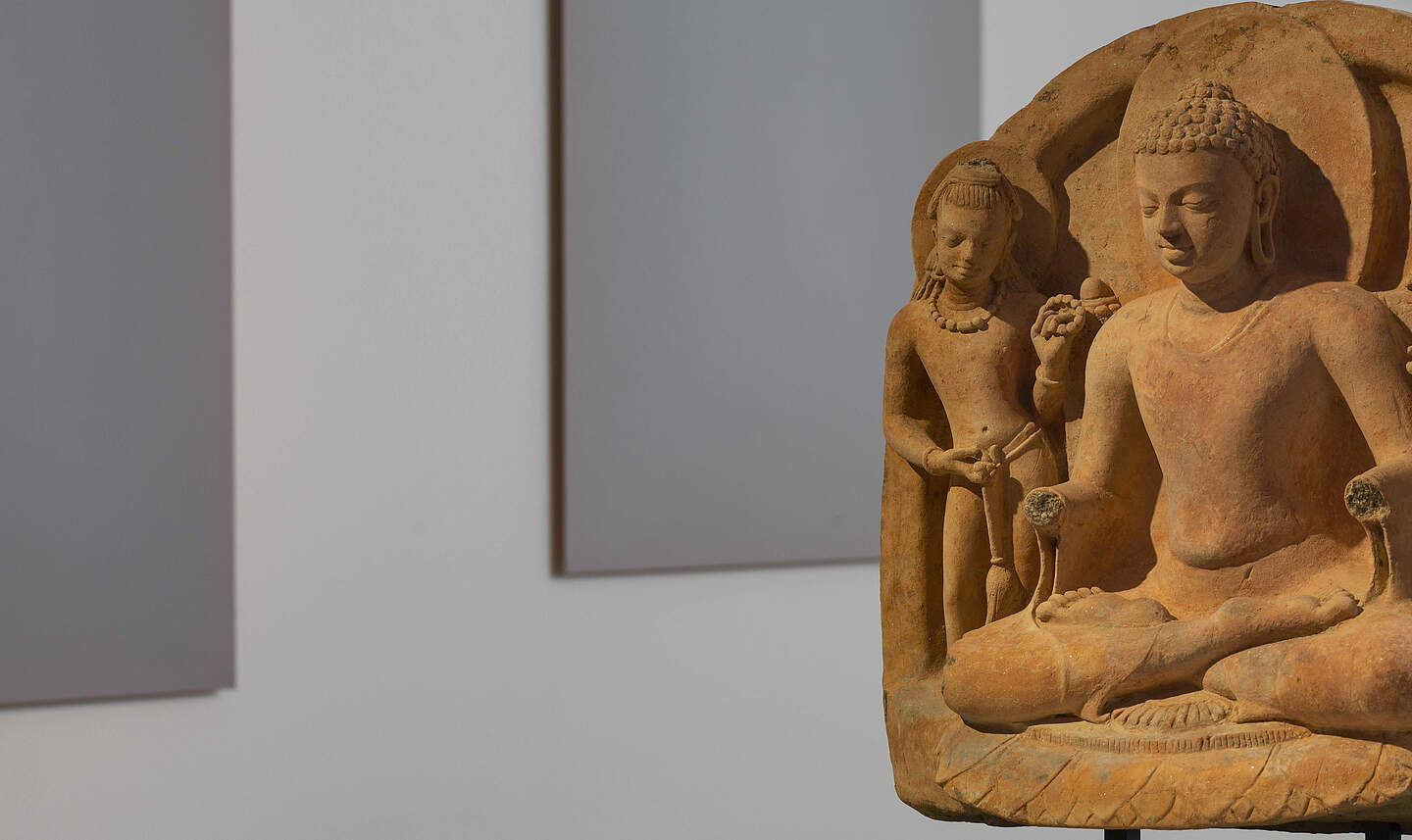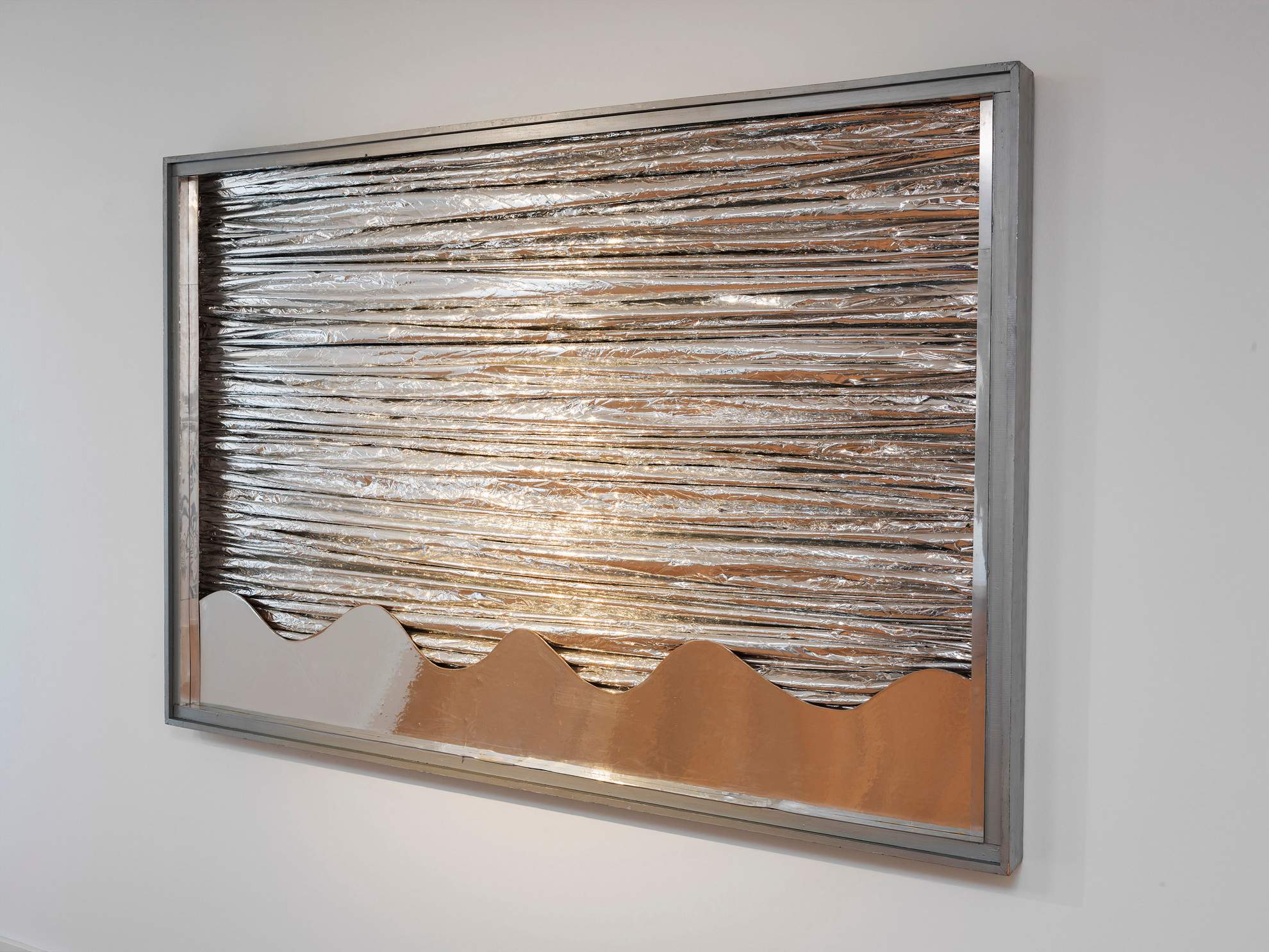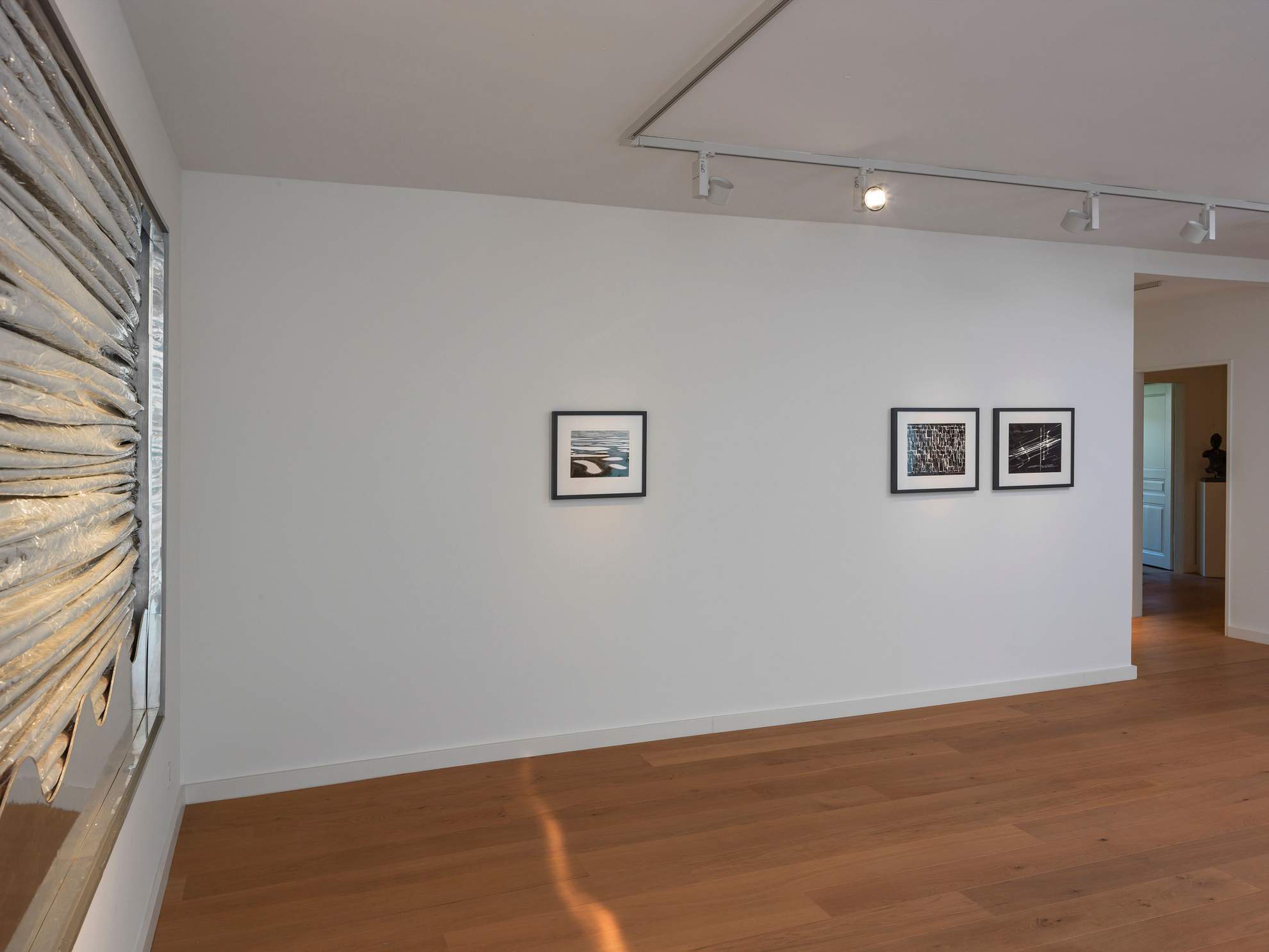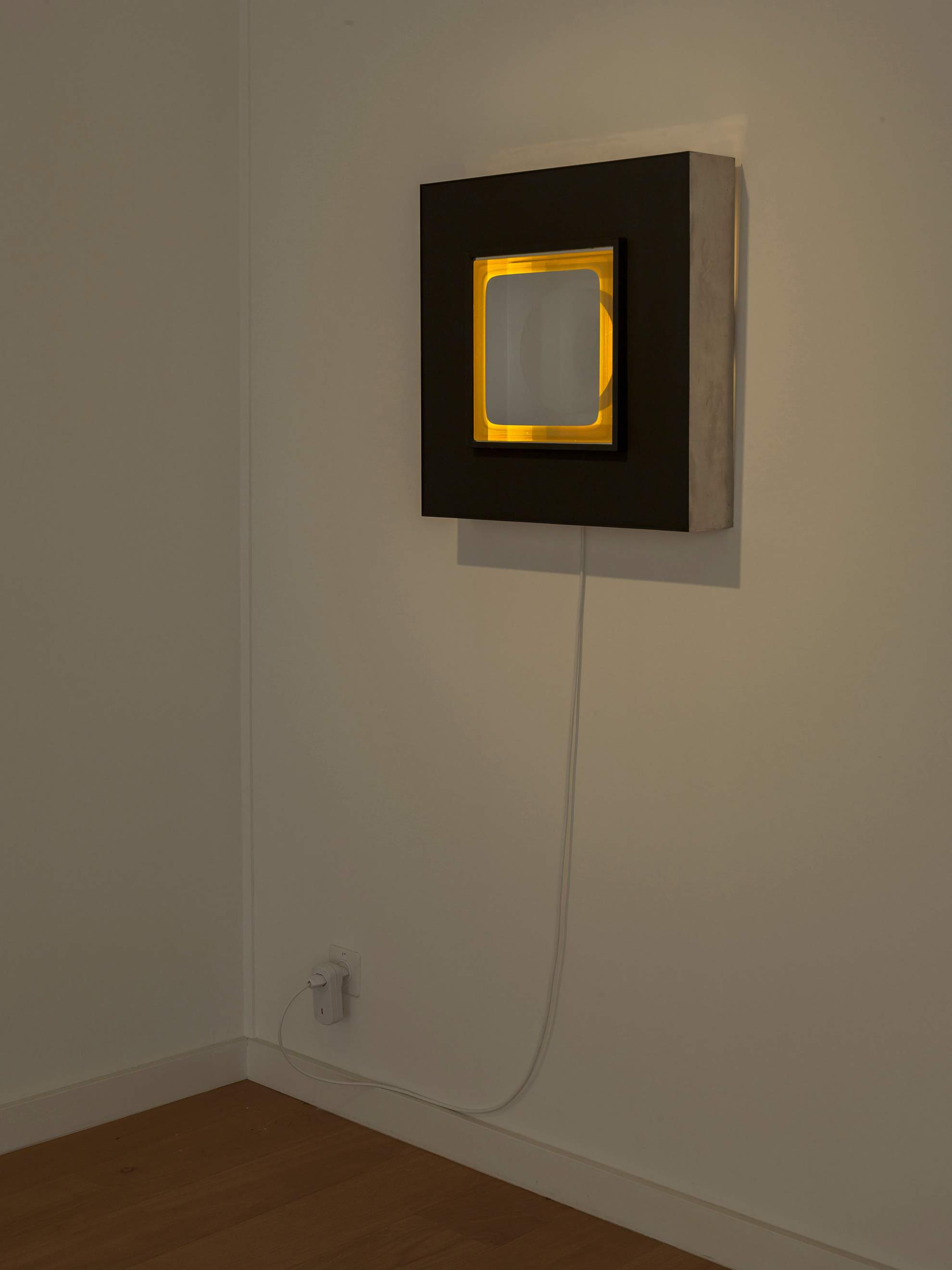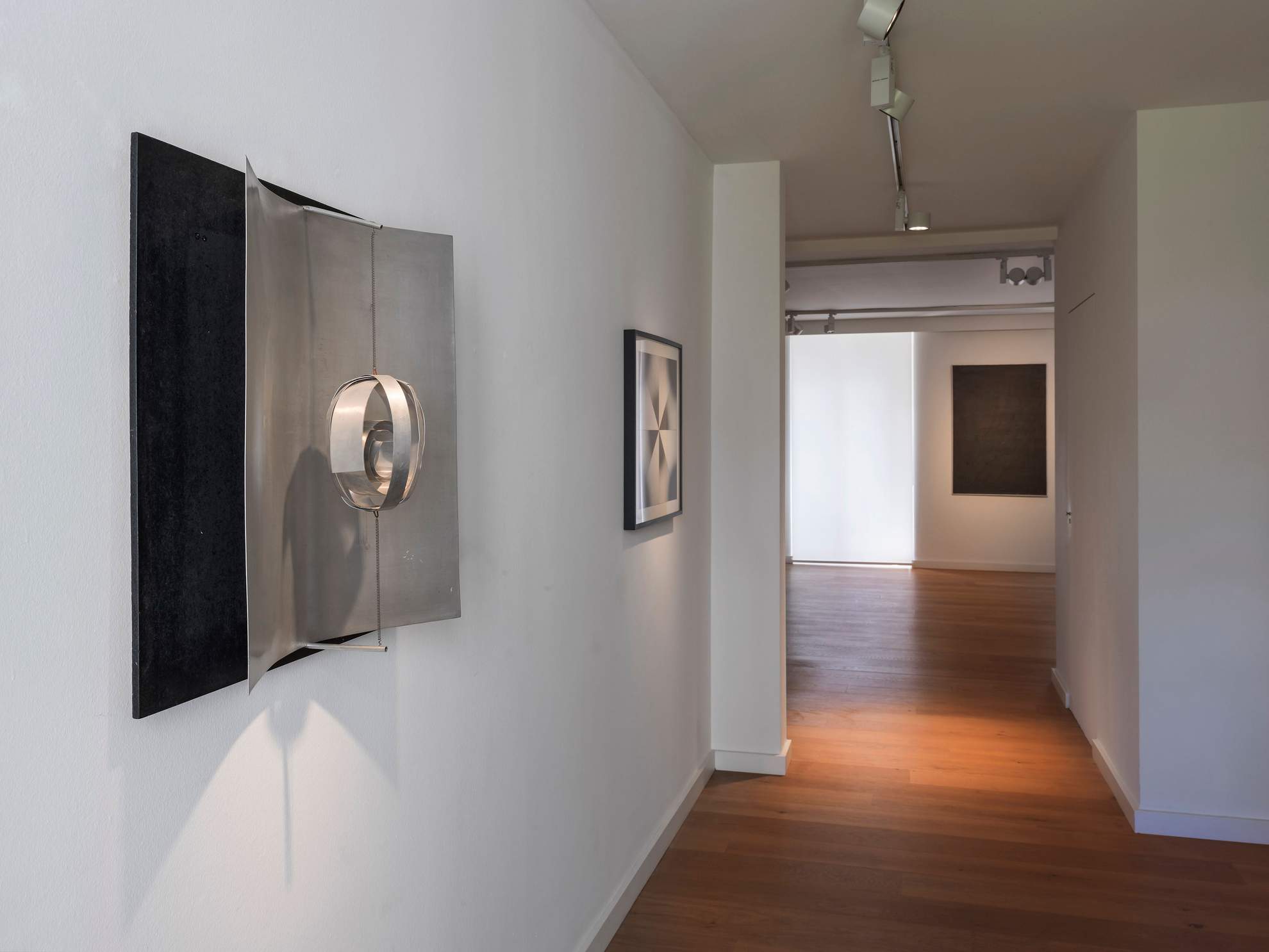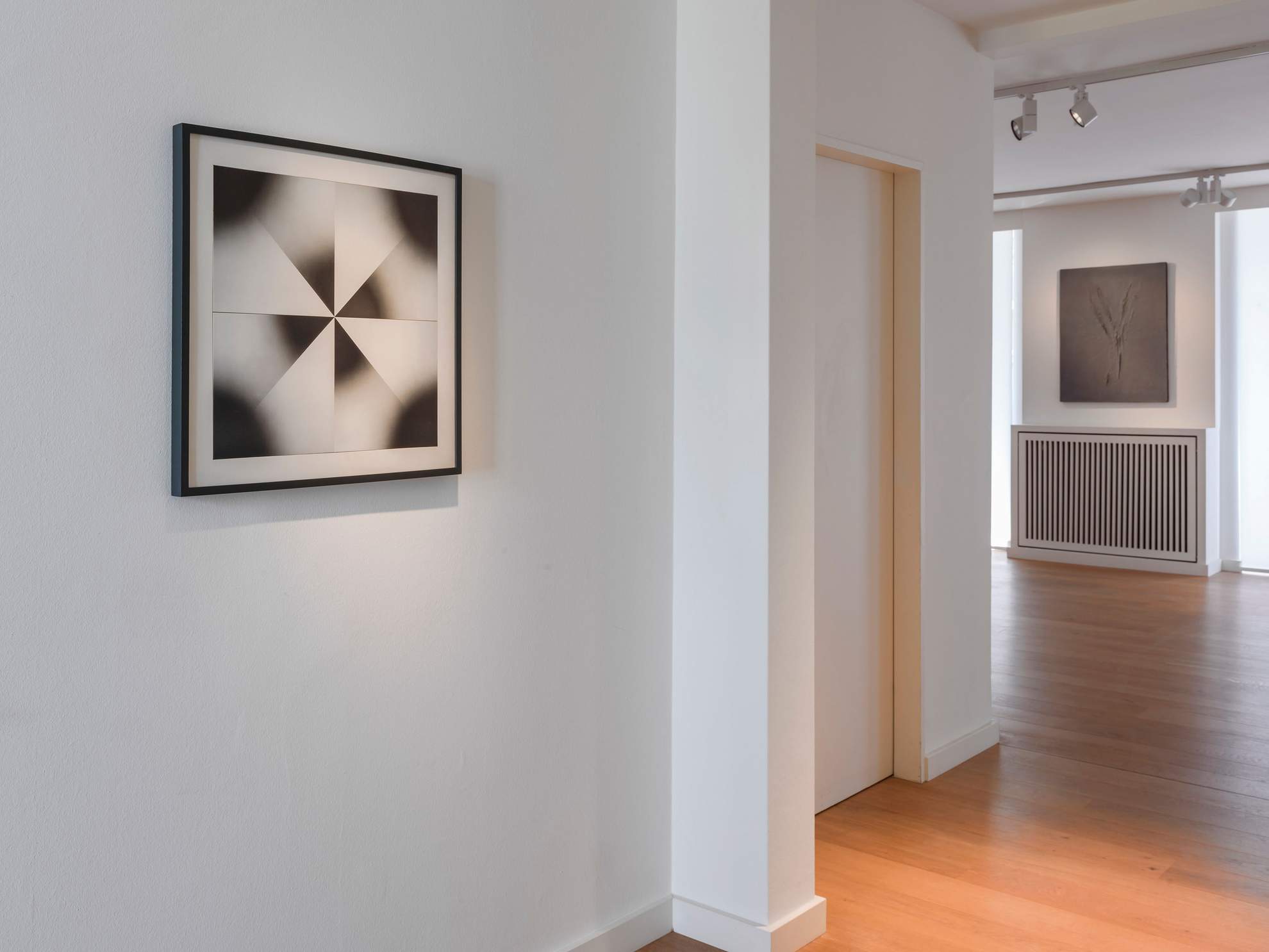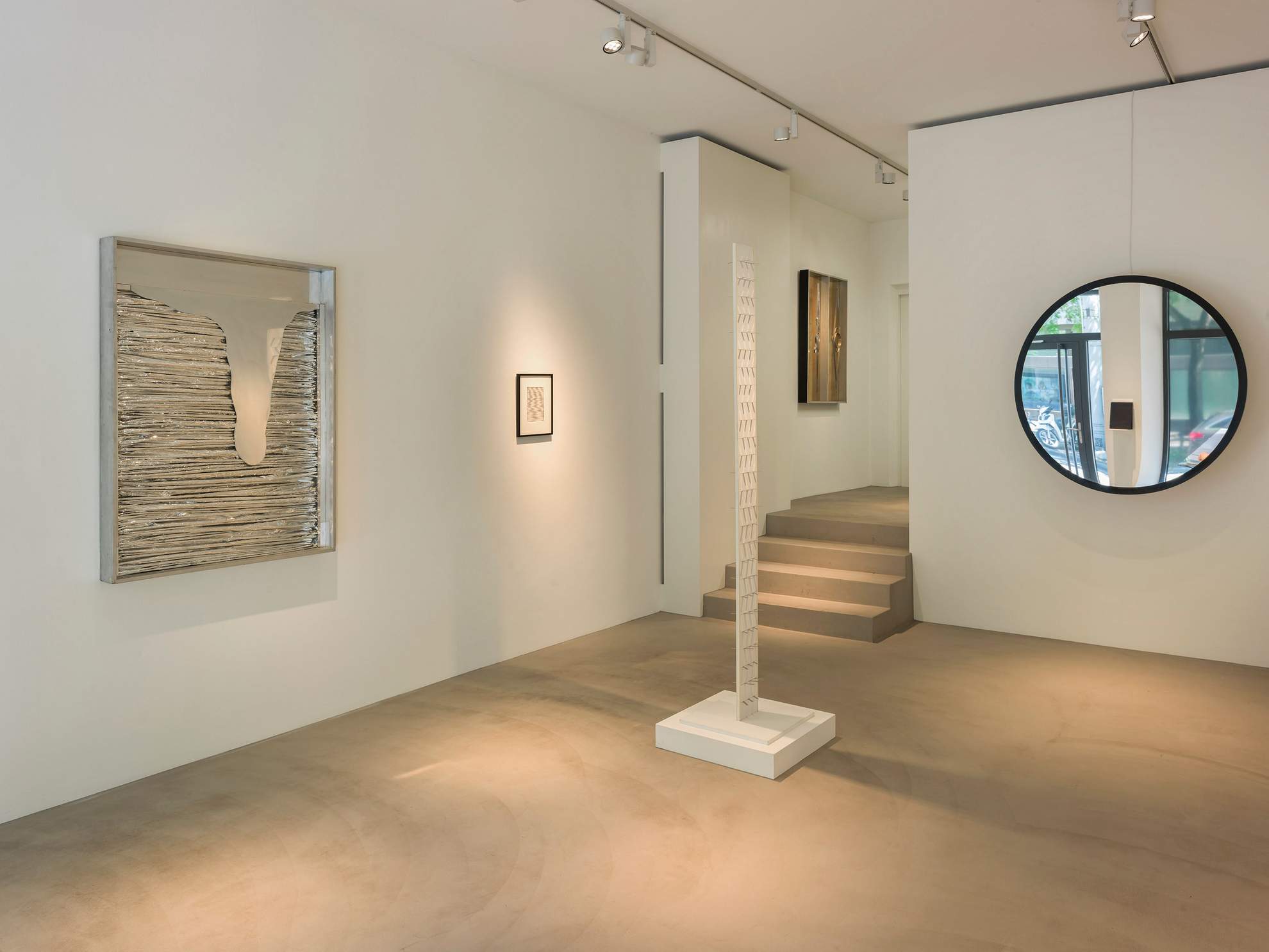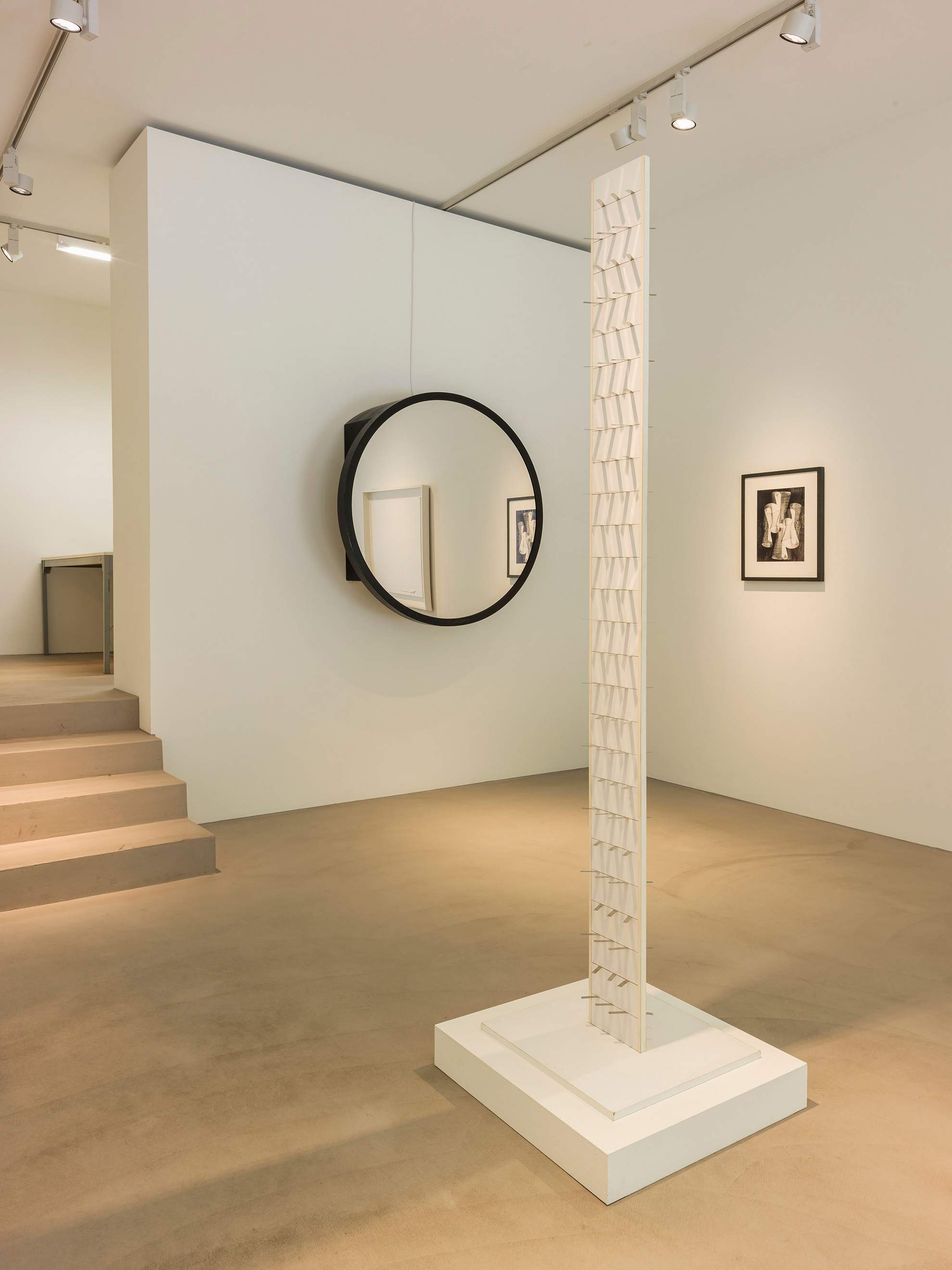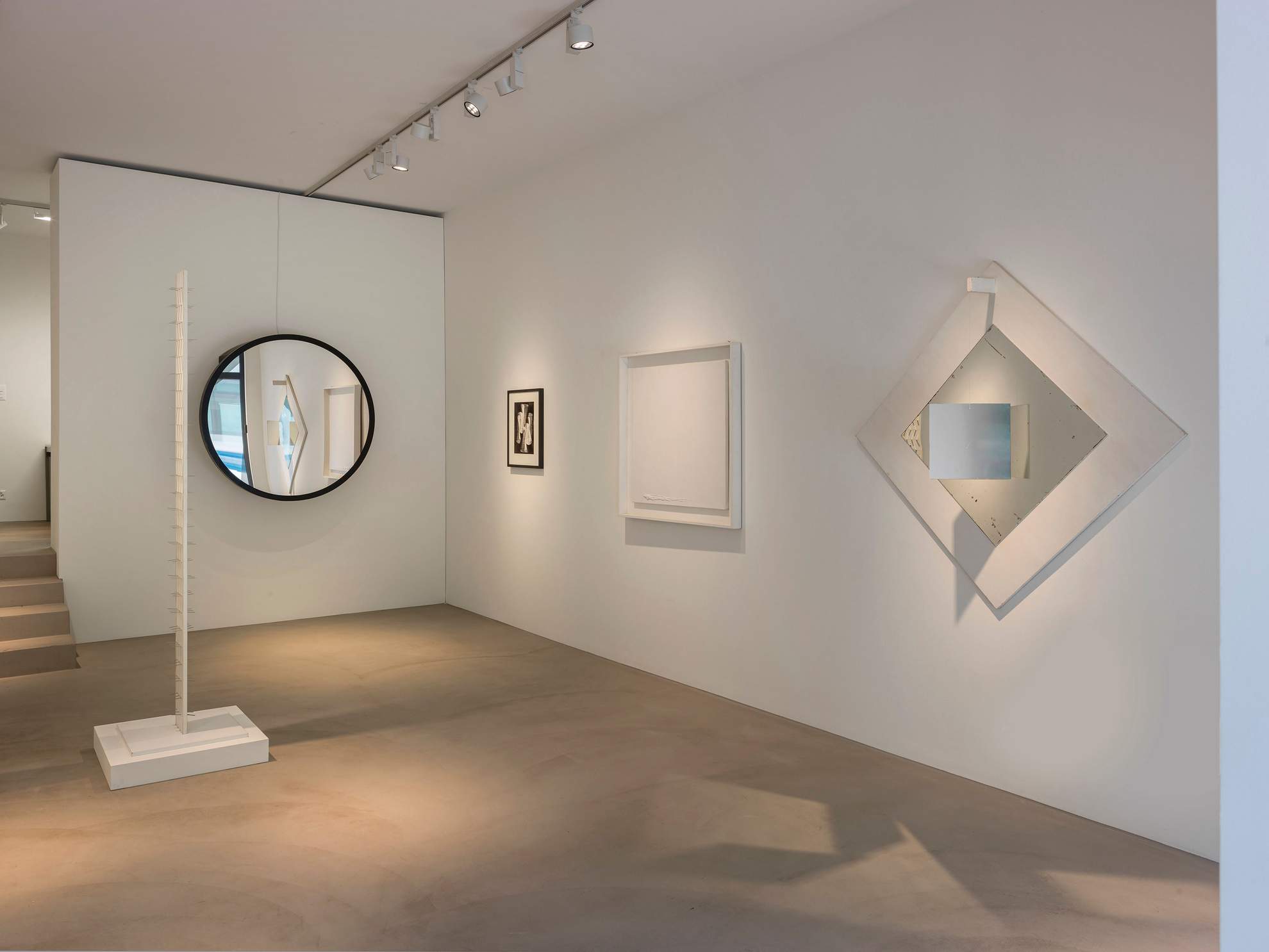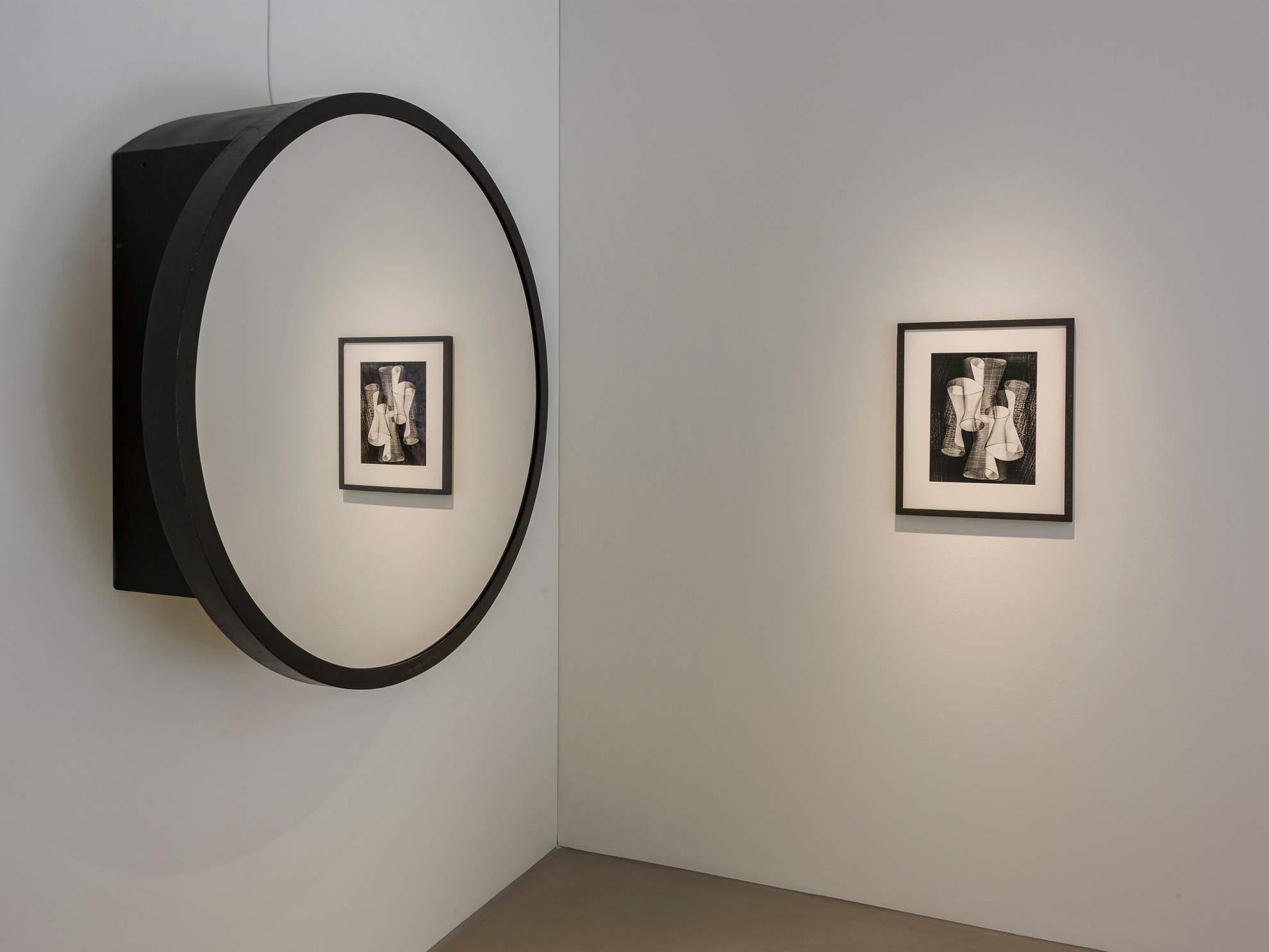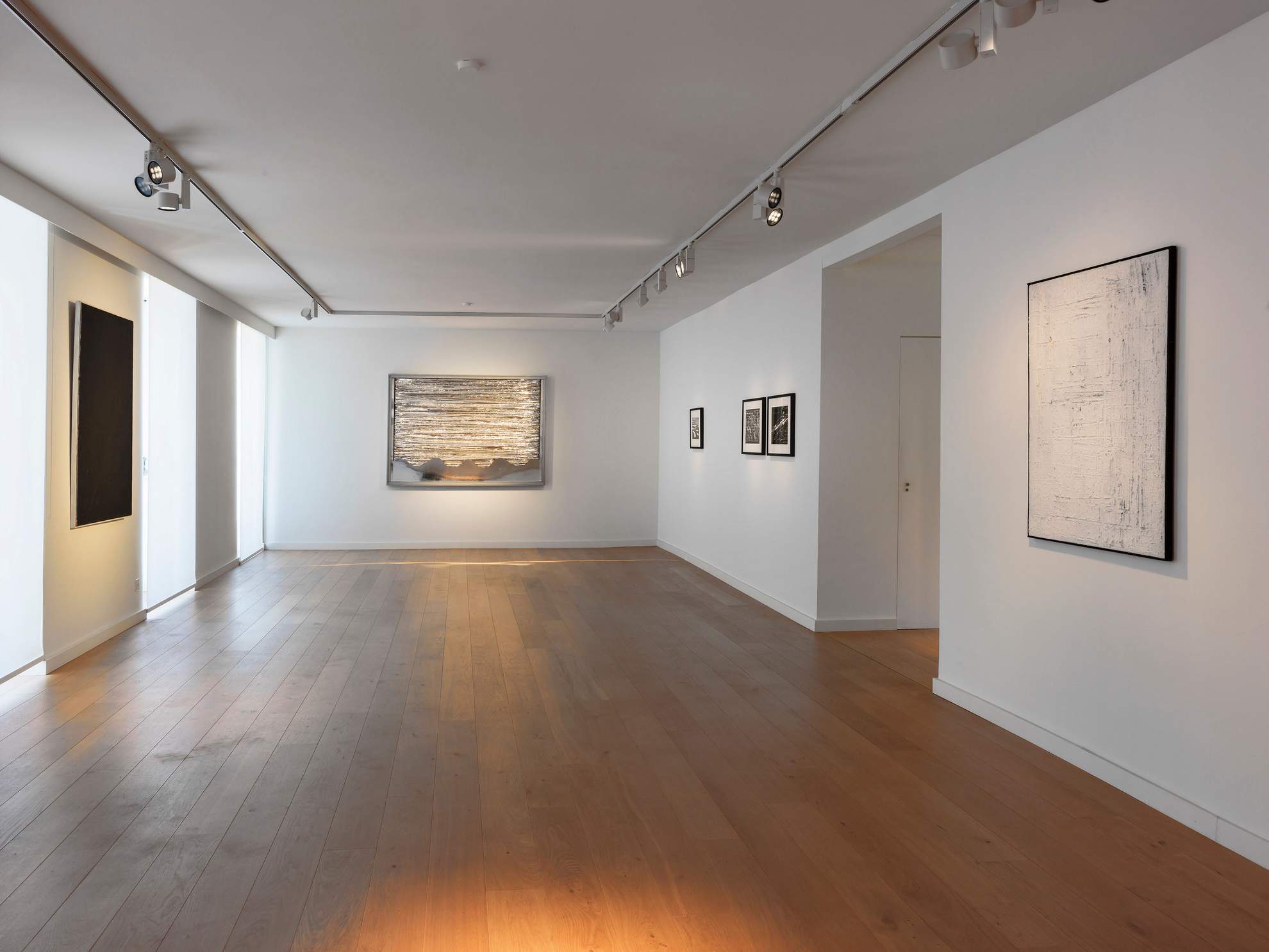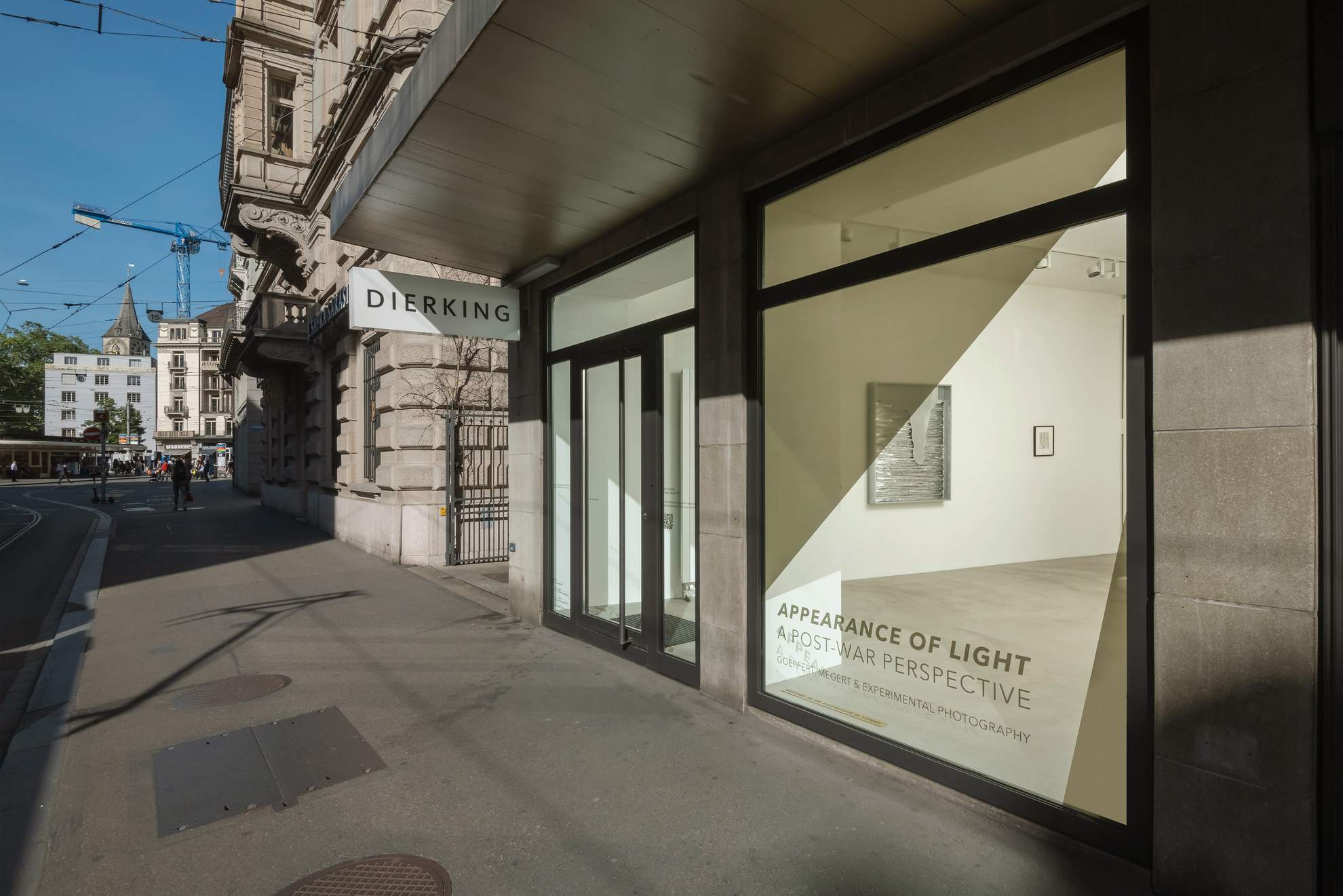
APPEARANCE OF LIGHT
A POST-WAR PERSPECTIVE
-
In the exhibition Appearance of Light – a Post-War Perspective, Galerie Dierking, on the Paradeplatz in Zurich, presents works by Hermann Goepfert and Christian Megert together with experimental photographs by Kilian Breier, Peter Keetman, Ferry Radax and Otto Steinert, illustrating avant-garde trends of new pictorial aesthetics in various media after 1950.
Light is form
The credo of Hermann Goepfert (1926-1982)
"Light is form", was the credo of Hermann Goepfert (1926-1982), who aimed to render visible the aesthetic quality of light – particularly of natural light – through preformed instruments.
During the 1950s, Goepfert, who lived in Frankfurt am Main, had begun to reduce the use of colour in his works, ultimately creating pure white grounds with small convexities in order to illustrate real light as reflection. He then replaced the three-dimensional painted structures with metal insertions, later also exchanging the canvas for metal. His kinetic aluminium reflectors were designed to intercept and reproduce the light in the room.
Similarly, the light art of Christian Megert (b 1936 in Bern) is brought alive by interaction with its surroundings. In 1961, the artist – well-known for his mirror objects – formulated in his manifesto a new space his lasting artistic intention of creating "a space without beginning or end". Like Goepfert and other contemporaries, from the mid-1950s Megert created material and structural images. In 1959 he began incorporating mirrors in order to give his reliefs more depth. A member of the European ZERO group, in the 1960s he created some environments, including his famous mirror room for documenta 4, and his ZERO room, which he had originally intended for an exhibition in 1963 in the Frankfurt Galerie d, which also represented Hermann Goepfert. From the mid-1960s, Megert combined mirrors with fluorescent tubes and engines to make lumino-kinetic object boxes that produce an illusionist spatial effect.
Photographers Kilian Breier, Peter Keetman, Ferry Radax and Otto Steinert also wished to return to the "zero point" of design, and were constantly in search of new, specific photographic resources. In its properties, the material should speak for itself, exposing the designer's intervention. At the end of the 1950s, the new photographic works gave rise to links with other artists from concrete art. In 1960, Kilian Breier was invited by Otto Piene and Heinz Mack to participate in the catalogue of the ZERO group for the ZERO 3 exhibition in Milan.
"What we want is to break conservatism, to offer something new and convincing, to open people's eyes. I'm definitely anything but a fanatic, but we don't want any lacklustre affair under our new name", announced Peter Keetman (1916-2005), who founded fotoform in 1949 with Otto Steinert (1915-1978) and other photographers. Although their innovative union lasted only from 1949 until 1952, it had a significant influence on post-War photography.
In the quest for the fundamentals of design in the laboratory, the photographic object, the motif, became increasingly superfluous. In 1951, 1954 and 1958, Otto Steinert organised the exhibitions subjektive fotografie I-III. In dark-room experiments and through subsequent alteration of the negative – "solarisation" – Steinert tested new possibilities. From 1959, as a teacher at the Folkwang School in Essen, he passed on his findings. On Steinert's death in 1978, his students included photo artists such as Dirk Reinartz and Andreas Gursky.
Light and aspiration to innovation – these are the connecting elements in this exhibition, which opens on 10 June in the gallery premises on the Paradeplatz. Displayed on two floors is a new and fascinating combination of early oil paintings, reflectors and lumino-kinetic object boxes by Hermann Goepfert and Christian Megert, together with works by distinguished representatives of experimental photography.

APPEARANCE OF LIGHT
A POST-WAR PERSPECTIVE
-
Light is form
The credo of Hermann Goepfert (1926-1982)
In the exhibition Appearance of Light – a Post-War Perspective, Galerie Dierking, on the Paradeplatz in Zurich, presents works by Hermann Goepfert and Christian Megert together with experimental photographs by Kilian Breier, Peter Keetman, Ferry Radax and Otto Steinert, illustrating avant-garde trends of new pictorial aesthetics in various media after 1950.
"Light is form", was the credo of Hermann Goepfert (1926-1982), who aimed to render visible the aesthetic quality of light – particularly of natural light – through preformed instruments.
During the 1950s, Goepfert, who lived in Frankfurt am Main, had begun to reduce the use of colour in his works, ultimately creating pure white grounds with small convexities in order to illustrate real light as reflection. He then replaced the three-dimensional painted structures with metal insertions, later also exchanging the canvas for metal. His kinetic aluminium reflectors were designed to intercept and reproduce the light in the room.
Similarly, the light art of Christian Megert (b 1936 in Bern) is brought alive by interaction with its surroundings. In 1961, the artist – well-known for his mirror objects – formulated in his manifesto a new space his lasting artistic intention of creating "a space without beginning or end". Like Goepfert and other contemporaries, from the mid-1950s Megert created material and structural images. In 1959 he began incorporating mirrors in order to give his reliefs more depth. A member of the European ZERO group, in the 1960s he created some environments, including his famous mirror room for documenta 4, and his ZERO room, which he had originally intended for an exhibition in 1963 in the Frankfurt Galerie d, which also represented Hermann Goepfert. From the mid-1960s, Megert combined mirrors with fluorescent tubes and engines to make lumino-kinetic object boxes that produce an illusionist spatial effect.
Photographers Kilian Breier, Peter Keetman, Ferry Radax and Otto Steinert also wished to return to the "zero point" of design, and were constantly in search of new, specific photographic resources. In its properties, the material should speak for itself, exposing the designer's intervention. At the end of the 1950s, the new photographic works gave rise to links with other artists from concrete art. In 1960, Kilian Breier was invited by Otto Piene and Heinz Mack to participate in the catalogue of the ZERO group for the ZERO 3 exhibition in Milan.
"What we want is to break conservatism, to offer something new and convincing, to open people's eyes. I'm definitely anything but a fanatic, but we don't want any lacklustre affair under our new name", announced Peter Keetman (1916-2005), who founded fotoform in 1949 with Otto Steinert (1915-1978) and other photographers. Although their innovative union lasted only from 1949 until 1952, it had a significant influence on post-War photography.
In the quest for the fundamentals of design in the laboratory, the photographic object, the motif, became increasingly superfluous. In 1951, 1954 and 1958, Otto Steinert organised the exhibitions subjektive fotografie I-III. In dark-room experiments and through subsequent alteration of the negative – "solarisation" – Steinert tested new possibilities. From 1959, as a teacher at the Folkwang School in Essen, he passed on his findings. On Steinert's death in 1978, his students included photo artists such as Dirk Reinartz and Andreas Gursky.
Light and aspiration to innovation – these are the connecting elements in this exhibition, which opens on 10 June in the gallery premises on the Paradeplatz. Displayed on two floors is a new and fascinating combination of early oil paintings, reflectors and lumino-kinetic object boxes by Hermann Goepfert and Christian Megert, together with works by distinguished representatives of experimental photography.
IMPRINT
© DIERKING 2025
